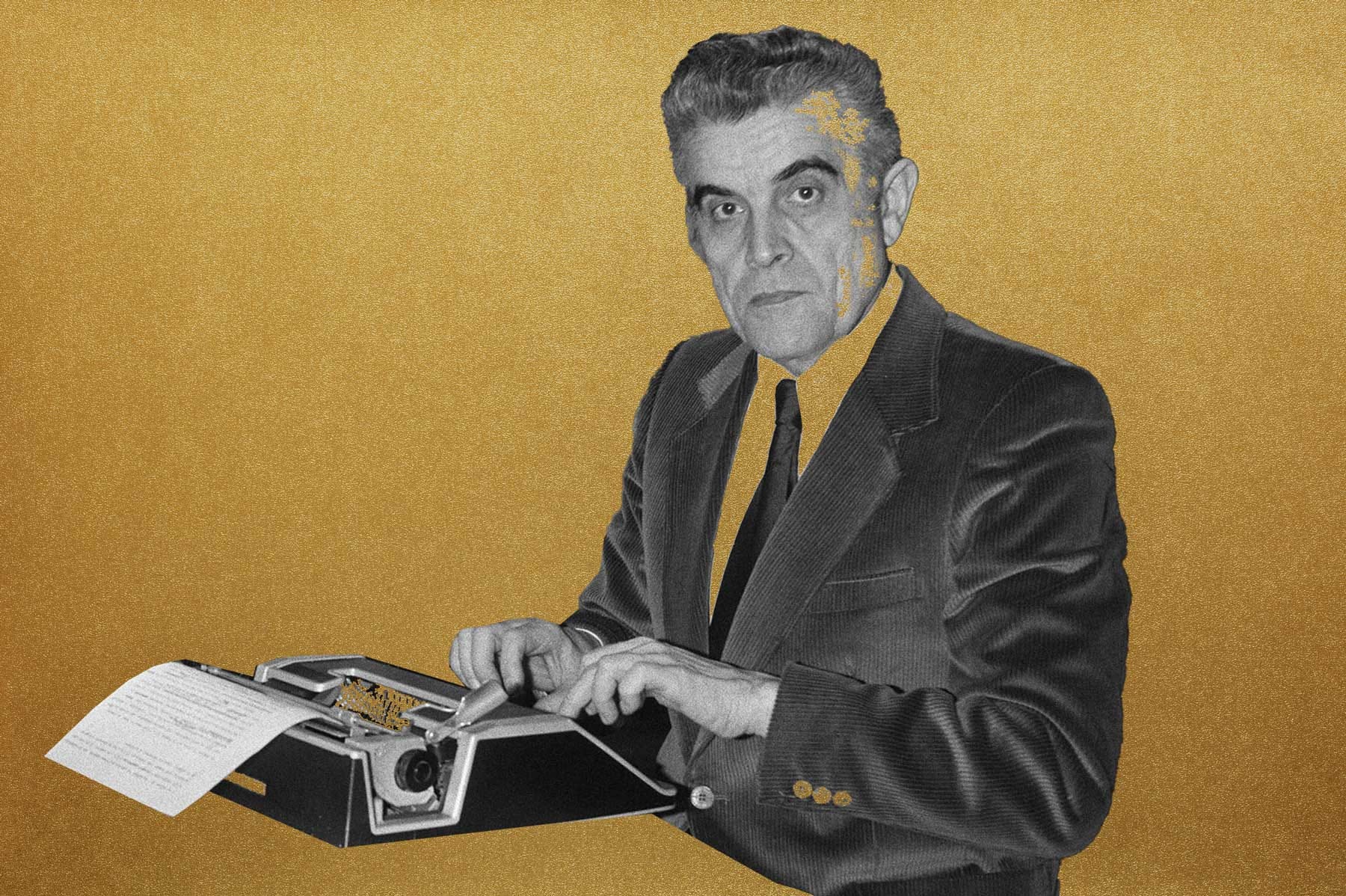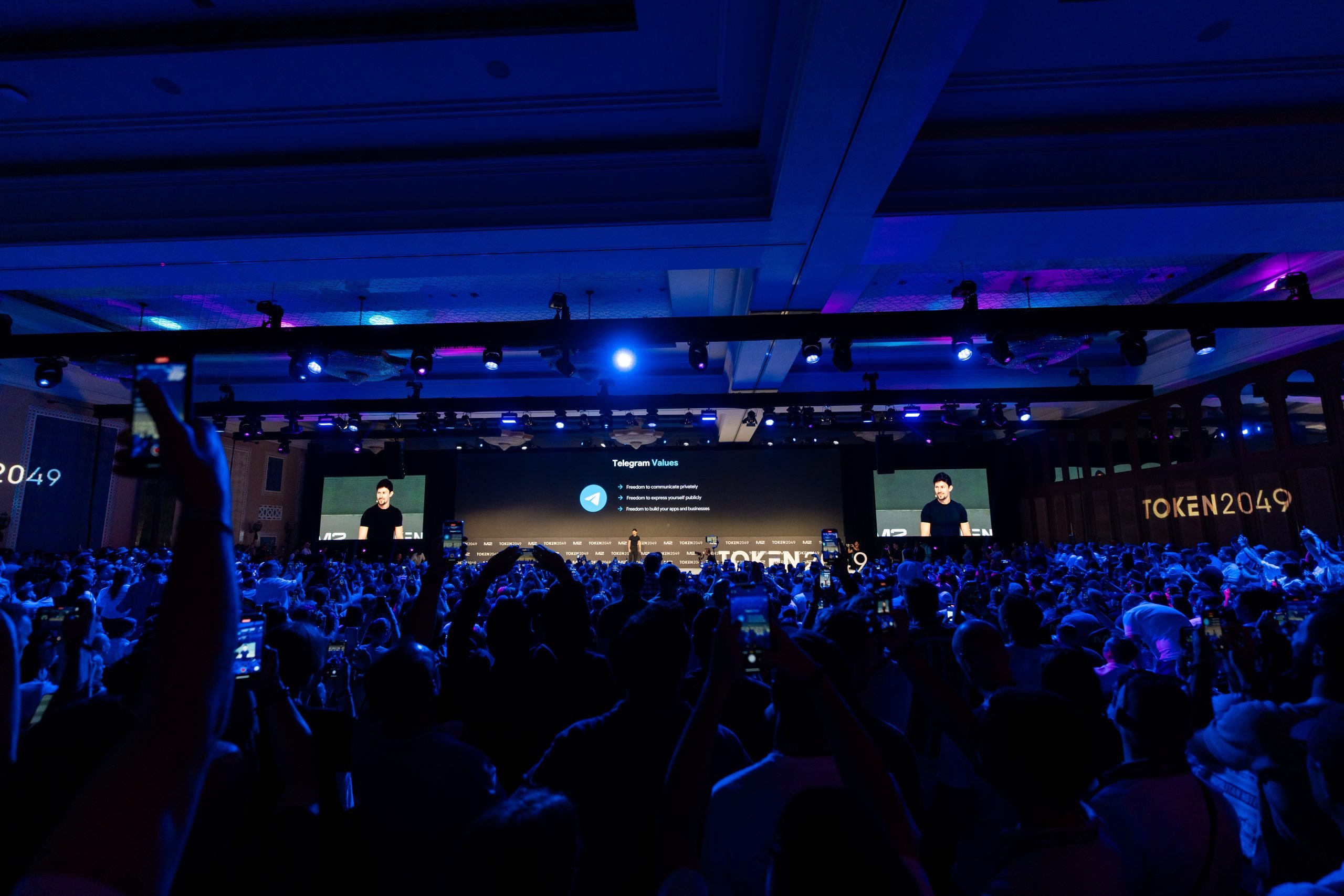Substacks
Free Speech on Trial. SpaceX’s Man-Made Miracle. Plus. . . Oliver Wiseman

On Monday morning, Jay Bhattacharya was feeling optimistic. The Stanford professor of health research policy was in Washington, D.C., to listen to oral arguments in the Supreme Court in Murthy v. Missouri. He is one of the plaintiffs in the case looking at the Biden administration’s efforts to police speech relating to the pandemic and the 2020 election on social media. Last year, Jay’s side won in a lower court. (You can read his op-ed about that victory in The Free Press here.)
Thanks to his dissenting views on everything from lockdowns to masks, Jay was censored by Big Tech during the pandemic. The question for the justices is whether the government violated his First Amendment rights by urging social media platforms to take down certain posts Jay wrote. A lower court ruled that the Biden administration’s requests to remove content were coupled with threats of punishment through heavier regulation—and therefore amounted to unconstitutional coercion.
Jay expected things to go well in the Supreme Court, not least because of the three pro–First Amendment justices appointed by President Trump. But, as he told me when we spoke on Tuesday, “some of the justices showed almost no regard whatsoever for the free speech rights of Americans.” For example, Justice Ketanji Brown Jackson said her “biggest concern” is that the case uses the First Amendment as a means of “hamstringing the government in significant ways.”
As Jay points out, “That’s the very purpose of the First Amendment: to restrict the government from violating basic speech rights.”
Brown Jackson, a liberal justice appointed by President Biden, was always going to be skeptical of Jay’s side of the case. But most Supreme Court reporters agreed that even the court’s swing votes weren’t swinging in a pro–First Amendment direction.
Jay said that after a day of legal argument he “left feeling deflated.” His lawyer, Jenin Younes, wasn’t so gloomy. “It went about as I predicted it would,” she said, sketching out what she saw to be the dynamics on the bench, with three sympathetic justices (Samuel Alito, Neil Gorsuch, and Clarence Thomas), three swing votes (Amy Coney Barrett, Brett Kavanaugh, and Chief Justice John Roberts), and three skeptics (Sonia Sotomayor, Elena Kagan, and Brown Jackson).
The court will hand down its decision by June—and so Jay and his legal team have plenty of time to read the tea leaves.
Meanwhile, Murthy v. Missouri is only one in a series of First Amendment cases being heard by the Supreme Court this session. The others are:
The Netchoice cases, which deal with laws in Texas and Florida that limit the freedom of social media companies to moderate content on their platforms. The cases pit the free speech rights of those companies against the rights of their users.
A case concerning whether a New York official violated the National Rifle Association’s First Amendment rights when, after the 2018 Parkland shooting, she urged banks and insurance companies to stop working with the group.
A case looking at whether public officials can block you on social media. (This week, the court has already decided, unanimously, that they cannot.)
All these cases apply the First Amendment to the social media age, but the first two are most important. With Netchoice, the court will decide whether social media companies should be treated as publishers—or as a modern-day public utility. And with Jay’s case, the court will decide whether the powers of the counter-disinformation complex—through which so much modern censorship occurs—are legitimate, or if those powers need to be checked.
As for Jay, he is still working through the mixed emotions he felt in the courtroom on Monday. “As an immigrant to the United States, I had tingles when I walked into the court,” he said. “I never imagined I would be in the middle of something that, I think, will go down in American history.
“But also, I felt a lot of sadness,” he told me, because his work relies on the First Amendment. “As a scientist and a professor, the heart of my job is to speak. And I have to look over my shoulder and worry whether the government is going to censor my speech. That’s just shocking.”
The Man-Made Miracle of SpaceX
For a media obsessed with Elon Musk, nothing brings more schadenfreude than a SpaceX rocket going up in flames. Except all the gloating over SpaceX’s experiments misses the point. What the press has reported as failure is really its winning formula: learn from your mistakes and iterate quickly until you can repeat success.
Finally, last week, SpaceX notched up a big win when its Starship rocket made it to space.
It was the most exciting moment for American space in years, writes Max Meyer in The Free Press. Yes, the Starship’s Super Heavy booster disintegrated as it reentered the atmosphere, but not before it managed to connect to SpaceX’s satellite internet network and livestream its flight to millions of viewers. Don’t listen to the haters, argues Max. SpaceX is innovating at breakneck speed, reopening the frontier and inspiring the rest of us to do crazy and hard things because they are crazy and hard. And if they figure out a way of colonizing Mars, that’d be cool too.
Here’s Max on the man-made miracle of SpaceX:
Ten Stories We’re Reading
Just 29.8 percent of New Yorkers rate the quality of life in New York City as “excellent” or “good,” compared to 51.2 percent in 2017. It’s up to you, New York. (CBC Resident Feedback Survey)
Joe Biden ruled out supporting Israel’s operation in Rafah in a call with Bibi Netanyahu on Monday. Israel is sending a delegation to Washington to discuss alternatives. And negotiations between Hamas and Israel are back underway in Qatar. (WSJ)
Donald Trump said that “any Jewish person that votes for Democrats hates their religion, they hate everything about Israel, and they should be ashamed of themselves.” (The Hill)
How Trump embraced the January 6 prisoner movement. Please stand for the J6 Prison Choir. (Semafor)
Companies are finding new ways to store energy—in balloons. Is this a climate change game changer? (NYT)
Now’s the time for austerity. Washington, tighten your belt! (Matthew Yglesias)
Europe’s soldiers keep quitting—just when NATO needs them. (Politico)
Protesters in Cuba decry power outages and food shortages. The regime has blamed America. Because of course. (CBS)
Iranians are dancing in the streets—and breaking the rules doing it. (FT)
They praised AI at SXSW—and the audience started booing. (Ted Gioia)
“White Rural Rage” and the Demonization of the Countryside
Remember that brief period of introspection after 2016 when liberal journalists and academics actually showed some curiosity about why, exactly, Donald Trump was so popular—especially among rural, working-class voters? Well, needless to say, we are in a different era now.
The elites have swapped their copies of Hillbilly Elegy for less sympathetic studies—like the book White Rural Rage: The Threat to American Democracy, by Tom Schaller and Paul Waldman. For his piece today, Sohrab Ahmari cracks the spine of this new look at the MAGA faithful and finds it to be exactly as nuanced and fair-minded as its title suggests.
Sohrab finds that the Washington book du jour—which the authors have been plugging in condescending segments on cable news—uses shoddy data to paint a negative picture of the antidemocratic barbarians who lie just beyond the city gates. It’s typical of today’s progressive contempt for rural America, he writes.
Read Sohrab’s full argument here:
If you like what you read, come and listen to Sohrab Ahmari argue that America should shut its borders in our Free Press debate on immigration on April 11 at the Majestic Theatre in Dallas. For tickets and further details, click here.
Chicago Takes Action on the Migrant Crisis. But Are the Voters Any Happier?
In January, Free Press staff writer Olivia Reingold met the Chicagoans furious at their city’s handling of the migrant crisis.
(Read her dispatch: “They’re Black Democrats. And They’re Suing Chicago Over Migrants.”)
Two months on, Chicago’s progressive mayor Brandon Johnson has finally shown signs that he is listening to the voters who say the city is struggling to handle the strain of new arrivals.
This week, Chicago began evictions to enforce a new 60-day limit designed to get migrants out of city-run shelters and into permanent housing. The new policy will see more than 2,000 migrants evicted by the end of April. (Approximately 11,000 migrants are currently housed in city-run shelters.)
Is the eviction policy easing voter anger? Or will the immigration issue continue to turn voters in this deep-blue city red? Olivia made a few calls to find out.
(Trigger warning: if you’re reading this in the White House and don’t want to be in a bad mood for the rest of the day, you may want to skip the next few paragraphs.)
Thomas Simmons is a 70-year-old retired city commissioner who says he “used to be a true Democrat.” He told The Free Press that the new 60-day limit is “full of bull. If you’re going to evict them, why not just send them back?”
Simmons, who is black, says the migrant crisis has forced him to reconsider his political allegiances: “It made me more open to Trump. When he wins, he’s going to send them back. . . . Honestly, I’m going for Trump.”
Roland Dates, a black, 62-year-old lifelong Democrat from Chicago’s West Side, says the migrant crisis keeps getting worse. Speaking to The Free Press the day before the Illinois primary, he said, “I’m going to go straight Republican. . . I’ve got to go with the lesser of two evils.”
Dates is skeptical that the 60-day eviction policy will really change how the city handles migrants. “That’s a game,” he says. “They say that, but they’ll just get an extension and another extension.”
Of his voting intentions come November, he says: “I guess Trump’s the man.”
Letters to the Editor: Lockdown Edition
On Saturday, we ran the latest installment of our Prophets series, which pays tribute to thinkers from the past who predicted our current moment. For his entry, Joe Nocera wrote about D.A. Henderson, the epidemiologist credited with eradicating smallpox who warned against shutting down the world to combat a pandemic.
Joe’s article prompted a response from someone who actually knew Henderson, who died in 2016: Donald G. McNeil Jr., the former New York Times science correspondent and author of a new book on pandemics, The Wisdom of Plagues. Here’s his letter:
Joe Nocera suggests that D.A. Henderson, were he alive today, would agree with the premises of Joe’s new book, The Big Fail, particularly the idea that lockdowns were the wrong response to the Covid pandemic.
Unlike Joe (I suspect), I actually knew D.A. Henderson. I interviewed him frequently and I wrote his New York Times obituary—from which Joe quotes. When presented with new facts, D.A. would change his mind. I gave examples of that in the obit. While Joe is correct in saying that Henderson warned that closing down society to stop a pandemic would have unpleasant consequences, that does not mean he would have backed the absurd idea advanced in the Great Barrington Declaration that we should have just let the virus rip through the population (while somehow—they never explained how—magically “protecting the vulnerable”). That was a ridiculous, dangerous idea, and the Great Barrington epidemiologists—and their acolytes, like Scott Atlas, a member of Trump’s White House Coronavirus Task Force—kept insisting that the end of the pandemic was just around the corner, thanks to their theory that it would stop when 30 percent of the population had been infected. They were wrong. As early as the late summer of 2020, Atlas was insisting that the epidemic was fading away. At the time, about 200,000 Americans were dead; another 900,000 more would die after he made that statement.
Joe cites Sweden as a model we should have emulated. It’s an article of faith among lockdown skeptics that Sweden did great during the pandemic. It did not. It became famous in the spring of 2020 for taking a laissez-faire approach. Before the year ended, the country—including the king and the epidemiologist who came up with the laissez-faire policy—admitted that it had failed because so many Swedes had died (mostly in nursing homes). Lockdowns and school closures, much like those in the rest of Europe, were imposed. By the time the pandemic was over, Sweden had a far higher Covid death rate than any of its neighbors (about 2,700 deaths per million vs. 1,200 for next-door Norway). It had more deaths per capita than Germany and was on a par with Spain and France. In other words, it did just about average in Western Europe.
And the U.S. did terribly, with a higher Covid death rate (3,600/million) than any Western European country. In my book The Wisdom of Plagues I, like Joe, argue that we failed terribly in the face of Covid—but because we reacted too slowly, too incompetently, with too much political fragmentation. And that ultimately, the most important reason for our high death rate was vaccine rejection.
I’ve been denounced as a totalitarian for arguing in favor of a rapid, aggressive, Pentagon-like response to epidemics, for closing borders, restricting travel, ending home quarantine, ending religious exemptions, and imposing rigorous vaccine mandates (and, yes, brief but rigidly enforced shutdowns and mask mandates if testing data suggest that they will keep local hospitals from being overwhelmed—not to please teachers unions). I estimate that our failed response meant we lost almost 550,000 more lives than we should have to Covid. And I think that if we don’t get better at this, we’ll lose more Americans next time.
And I’m pretty sure D.A., were he still alive, would agree with me rather than with Scott Atlas.
—Donald McNeil
And here’s Joe’s response:
Donald McNeil spent most of his career as an infectious disease reporter for The New York Times, so it’s not a surprise that he advocates for the Covid mitigation measures championed by his public health sources. But that also causes him to share the same blind spots—overlooking important factors that Henderson pointed out in his 2006 paper.
The first is that a “rapid, aggressive, Pentagon-like response” doesn’t take into account a hugely important factor: human behavior. You simply can’t lock people up in their homes, shut down their businesses, eliminate every venue for human contact and enjoyment, and expect people to put up with it indefinitely. China took exactly that approach, and its citizens ultimately revolted. When the government finally relented and allowed cities like Shanghai to open up again, a lot of people died.
Second, Henderson understood, as I quoted him in my story: “You have to be practical, and you have to be humble, about what public health can actually do, especially over sustained periods.” The person who recalled that quote for me was Dr. Tara O’Toole, Henderson’s longtime number two. I venture that she knew him even better than McNeil. And much of what McNeil calls for, such as travel restrictions, simply don’t work. We know now that most of the masks people used during the pandemic didn’t stop the virus either. Lockdowns? The evidence is overwhelming that lockdowns did not ultimately save lives.
Third, McNeil fails to make important distinctions—distinctions that are key to understanding the rationale behind the Great Barrington Declaration. As Martin Kulldorff, one of the authors of that document, told me, “There is an enormous age difference in the risk of mortality—a thousandfold difference between the old and the young.” The elderly were highly vulnerable to the virus, but as you went down the age scale, people were less likely to die from it. And the number of children who died of Covid was miniscule. McNeil doesn’t mention the harm done to children by lengthy school closings, but it was far worse than any harm inflicted on them by the pandemic. On the flip side, of the 1.1 million Americans who died of Covid, some 200,000 were nursing home residents. McNeil scoffs at the idea that society could protect the elderly while letting the rest of society function, but of course we could. We just chose not to.
McNeil’s view that D.A. Henderson would have turned his back on his lifelong beliefs, based on real-world experience, seems pretty unlikely. So much of life requires balancing risks versus rewards. Pandemics are no different. As bad as the virus was, public-health experts made a grievous mistake overselling the risks to the exclusion of all else. That is why they have so little credibility today. That’s what Henderson understood, and McNeil doesn’t.
—Joe Nocera
Got an interesting perspective on a Free Press story? Write to us! letters@thefp.com
Oliver Wiseman is a writer and editor for The Free Press. Follow him on X @ollywiseman.
To support independent journalism, become a Free Press subscriber today:
The Free Press earns a commission from any purchases made through Bookshop.org links in this article.
Substacks
The Prophets: René Girard Cynthia L. Haven

Welcome back to The Prophets, our Saturday series about fascinating people from the past who foresaw our current moment. Last week, Tiya Miles wrote about science fiction writer Octavia Butler, who predicted the political, technological, and environmental forces that would roil the twenty-first century.
Today, we bring you our ninth and final prophet, René Girard, whose theory of “mimetic desire” has become especially prescient in our internet age.
Today, a single tweet could wreck a career. It could even bring down a government, if the stars are aligned. Mobs gather online instantly, ideologies form seemingly overnight, and cancel culture punishes those who dare dissent. This precarious, pernicious world is the one we live in now. But decades before anyone had heard of “doxxing” or “downvoting” or “dragging,” a French literary scholar at Stanford, born more than 100 years ago, warned of what was to come. He foresaw the perils of combining human nature with a globally connected world.
“When the whole world is globalized, you’re going to be able to set fire to the whole thing with a single match,” predicted French theorist René Girard.
So long as globalization was slow in coming, everyone hoped and prayed that it would come soon. World’s fairs were staged in its honor, one after another. Now that globalization is here, however, it arouses more anxiety than pride.
The longtime Stanford professor of French language, literature, and civilization explored envy, imitation, crowd behavior, and reciprocal violence, starting in the 1950s. He first developed his insights not by poring through datasets or running a social science lab, but surprisingly, from a deep study of great novels.
Novels tell us the truth, he said. One of the aspects many people find so compelling about his work is that he could extrapolate theories of real-life behavior from made-up stories—from Cervantes, Proust, Dostoevsky, Flaubert. The competitive salons and social climbing of Proust’s world led Girard to theorize about the origins of human rivalry. The self-destructiveness of Dostoevsky’s characters sparked Girard’s ideas about the desire to escape our limits and even become someone else.
Now, nine years after his death, people in the fields of anthropology, business, history, literature, popular culture, psychology, religion, and even the hard sciences, are taking greater interest in his ideas about the forces that drive much of human behavior. Silicon Valley, in particular, is fascinated by his thinking. But it all began with literature.
Girard’s theory of mimetic desire describes our fundamental compulsion to want what others want or have. “We don’t even know what our desire is. We ask other people to tell us our desires,” he said at a Stanford lecture in 2007. “We would like our desires to come from our deepest selves, our personal depths—but if it did, it would not be desire. Desire is always for something we feel we lack.”
Substacks
April 26, 2024 Heather Cox Richardson
Yesterday, in a long story about “the petty feud between the [New York Times] and the White House,” Eli Stokols of Politico suggested that the paper’s negative coverage of President Joe Biden came from the frustration of its publisher, A. G. Sulzberger, at Biden’s refusal to do an exclusive interview with the paper. Two people told Stokols that Sulzberger’s reasoning is that only an interview with an established paper like the New York Times “can verify that the 81-year-old Biden is still fit to hold the presidency.”
For his part, Stokols reported, Biden’s frustration with the New York Times reflects “the resentment of a president with a working-class sense of himself and his team toward a news organization catering to an elite audience,” and their conviction that the newspaper is not taking seriously the need to protect democracy.
A spokesperson for the New York Times responded to the story by saying the idea that it has skewed its coverage out of pique over an interview is “outrageous and untrue,” and that the paper will continue to cover the president “fully and fairly.”
Today, Biden sat for a live interview of more than an hour with SiriusXM shock jock Howard Stern. Writer Kurt Andersen described it as a “*Total* softball interview, mostly about his personal life—but lovely, sweet, human, and Biden was terrific, consistently clear, detailed, charming, moving. Which was the point. SO much better than his opponent could do.”
Also today, the Treasury Department announced that the pilot program of the Internal Revenue Service (IRS) that enabled taxpayers to file their tax returns directly with the IRS for free had more users than the program’s stated goal, got positive ratings, and saved users an estimated $5.6 million in fees for tax preparation. The government had hoped about 100,000 people would use the pilot program; 140,803 did.
Former deputy director of the National Economic Council Bharat Ramamurti wrote on social media, “Of all the things I was lucky enough to work on, this might be my favorite. You shouldn’t have to pay money to pay your taxes. As this program continues to grow, most people will get pre-populated forms and be able to file their taxes with a few clicks in a few minutes.” Such a system would look much like the system other countries already use.
Also today, the Federal Trade Commission announced that Williams-Sonoma will pay a record $3.17 million civil penalty for advertising a number of products as “Made in USA” when they were really made in China and other countries. This is the largest settlement ever for a case under the “Made in USA” rule. Williams-Sonoma will also be required to file annual compliance certifications.
FTC chair Lina Khan wrote on social media: “Made in USA fraud deceives customers and punishes honest businesses. FTC will continue holding to account businesses that misrepresent where their product[s] are manufactured.”
In another win for the United Auto Workers (UAW), the union negotiated a deal today with Daimler Trucks over contracts for 7,300 Daimler employees in four North Carolina factories. The new contracts provide raises of at least 25% over four years, cost of living increases, and profit sharing. This victory comes just a week after workers at a Volkswagen plant in Chattanooga, Tennessee, voted overwhelmingly to join the UAW.
Today was the eighth day of Trump’s criminal trial for his efforts to interfere with the 2016 election by paying to hide negative information about himself from voters and then falsifying records to hide the payments. David Pecker, who ran the company that published the National Enquirer tabloid, finished his testimony.
In four days on the stand, Pecker testified that he joined Michael Cohen and others in killing stories to protect Trump in the election. Trump’s longtime executive assistant Rhona Graff took the stand after Pecker, and testified that both Karen McDougal and Stormy Daniels were in Trump’s contacts. Next up was Gary Farro, a bank employee who verified banking information that showed how Michael Cohen had hidden payments to Daniels in 2016.
Once again, Trump appeared to be trying to explain away his lack of support at the trial, writing on his social media channel that the courthouse was heavily guarded. “Security is that of Fort Knox,” he wrote, “all so that MAGA will not be able to attend this trial….” But CNN’s Kaitlan Collins immediately responded: “Again, the courthouse is open [to] the public. The park outside, where a handful of his supporters have gathered on [trial] days, is easily accessible.”
Dispatch Politics noted today that when co-chairs Michael Whatley and Lara Trump and senior campaign adviser Chris LaCivita took over the Republican National Committee (RNC), they killed a plan to open 40 campaign offices in 10 crucial states and fired 60 members of the RNC staff. According to Dispatch Politics, Trump insisted to the former RNC chair that he did not need the RNC to work on turning out voters. He wanted the RNC to prioritize “election integrity” efforts.
The RNC under Trump has not yet developed much infrastructure or put staff into the states. It appears to have decided to focus only on those that are key to the presidential race, leaving down-ballot candidates on their own.
While Trump appears to be hoping to win the election through voter suppression or in the courts, following his blueprint from 2020, Biden’s campaign has opened 30 offices in Michigan alone and has established offices in Wisconsin, Pennsylvania, Nevada, Arizona, Georgia, North Carolina, New Hampshire, and Florida.
Finally today, news broke that in her forthcoming book, South Dakota governor Kristi Noem wrote about shooting her 14-month-old dog because it was “untrainable” and dangerous. “I hated that dog,” she wrote, and she recorded how after the dog ruined a hunting trip, she shot it in a gravel pit. Then she decided to kill a goat that she found to be “nasty and mean” as well as smelly and aggressive. She “dragged him to the gravel pit,” too, and “put him down.”
Noem has been seen as a leading contender for the Republican vice presidential nomination on a ticket with Trump, and it seems likely she was trying to demonstrate her ruthlessness—a trait Trump appears to value—as a political virtue. But across the political spectrum, people have expressed outrage and disgust. In The Guardian, Martin Pengelly said her statement, “I guess if I were a better politician I wouldn’t tell the story,” was “a contender for the greatest understatement of election year.”
—
Notes:
https://www.politico.com/news/magazine/2024/04/25/new-york-times-biden-white-house-00154219
https://www.theguardian.com/books/2024/apr/26/trump-kristi-noem-shot-dog-and-goat-book
https://home.treasury.gov/news/press-releases/jy2298
https://www.npr.org/2024/04/26/1247632662/daimler-truck-uaw-strike-averted
Twitter (X)
linakhanftc/status/1783918517605069174
bharatramamurti/status/1784037919579095516
kbandersen/status/1783881809450660239
kaitlancollins/status/1783852710674018693
Substacks
The Chris Hedges Report with independent candidate for the House Dennis Kucinich on the corruption of the two party system, the genocide in Gaza and the struggle to reclaim our democracy. Chris Hedges
The presidential election in November looks set to pit Donald Trump, who will most likely dismantle what is left of our decayed democracy, against Joe Biden, who is a full partner in the genocide of the Palestinians in Gaza. Not, for most of us, a palatable choice. The two ruling parties, who have foisted these candidates on the public, have at the same time conspired with their corporate sponsors to block third parties and independents, along with mavericks such as Bernie Sanders, from running viable campaigns. The only groups that consistently win in our elections are the militarists, corporations and the billionaire class, who, of course, fund and stage manage the electoral farce. On all of the major issues – endless war, trade deals, deindustrialization, government surveillance, the steady decline of social services including a for-profit health care system that allows corporations to prey on the sick, the bloated prison population and militarized police – there is little daylight between the two ruling parties. How can we reclaim our democracy and provide real and meaningful political alternatives? Are we forever condemned to the diminishing returns offered by the least-worst option? Is there a way to create an electoral system that is not captive to big money and dominated by groups such as the Israel lobby? Joining me to discuss the state of our anemic democracy – a system the political philosopher Sheldon Wolin referred to as inverted totalitarianism — is Dennis Kucinich. Dennis served as U.S. Representative from Ohio’s 10th Congressional district from 1997 to 2013, losing his seat when the Democratic Party engineered redistricting that forced him to run in the newly-drawn 9th district. He was a presidential candidate in 2004 and 2008, running on an anti-war platform during the wars in Iraq and Afghanistan. He is a strong advocate for unions, the restoration of our civil liberties and singer-payer health care. Dennis, who briefly served as Bobby Kennedy’s campaign manager, is currently running as an independent in Ohio’s 7th Congressional district.
-

 Awakening Video8 months ago
Awakening Video8 months agoThis is What Happens When You Try to Report Dirty Cops
-

 Substacks1 month ago
Substacks1 month agoTHE IRON-CLAD PIÑATA Seymour Hersh
-

 Substacks7 months ago
Substacks7 months agoThe Russell Brand Rorschach Test Kathleen Stock
-

 Substacks6 months ago
Substacks6 months agoLetter to the Children of Gaza – Read by Eunice Wong Chris Hedges
-

 Substacks7 months ago
Substacks7 months agoA real fact-check of Trump’s appearance on Meet the Press Judd Legum







